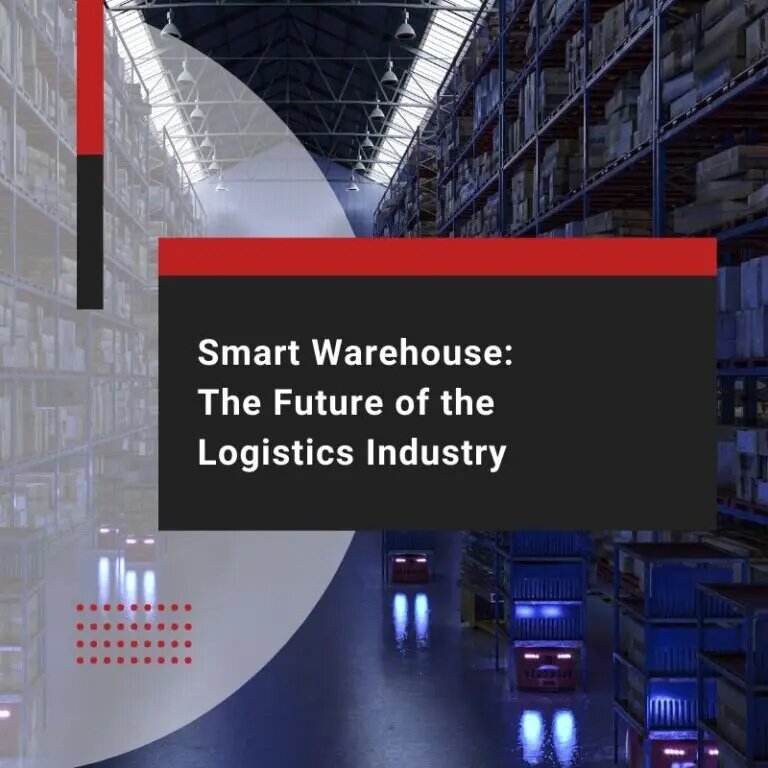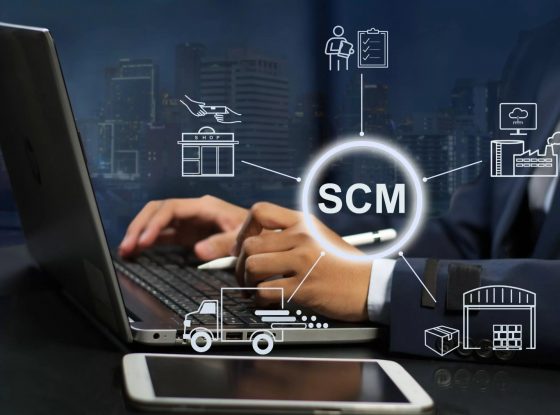Smart Warehouse: The Future of the Logistics Industry in Indonesia

Understanding The Smart Warehouse Concept
Whether we like it or not, technology is advancing rapidly. Probably the fastest it has ever grown. With automation at its core, several jobs are redundant thanks to technology. Embracing this new technology, smart warehouse technology seems to be one of the most prominent businesses that benefit highly from technology.
A smart warehouse is when warehousing operations are carried out through technological processes known as warehouse automation. This sort of automation minimizes human workers and helps increase the productivity of a warehouse due to a lower error rate.
Smart warehouse technology can do automatically what otherwise traditional warehouses would find impossible. Real-time updates of tasks, optimization of manual tasks, and increased automation, are just examples of how intelligent smart warehouse functions.
The technological advance applied in the facility leaves the specialized warehouse workers to focus on tasks of higher value since operations are made scalable and human interaction is kept at a minimum.
Some reports expect the smart warehouse market size to grow almost double from USD 14 billion in 2021 to about USD 25 billion by 2027.
With customers getting more diverse in their warehouse expectations, traditional warehouses struggle to meet modern customers’ needs. Adopting intelligent technologies in warehouses is the only way to survive business challenges.
Smart Warehouse: When Technology and Logistics Collide
Smart Warehouses As The Future of the Logistics Industry
Indonesian logistics and warehouse aggregator Shipper mentioned that smart warehouses are one of the critical parts of future logistic trends.
The Co-Founder and COO of Shipper have gone to the extent of saying that automation in smart warehouse technology is the best solution to manage operational costs. With minimal errors and increased productivity and efficiency, modern smart warehouse systems are essential in logistics services.
One inefficiency in the industry is improper warehouse management, leading to inadequate warehouse usage. While renting a warehouse annually, it is not uncommon for people to only use between 10% and 20% of their total capacity.
Smart warehouses also help reduce human errors that can be detrimental to building contractors and significantly increase operational costs.
A longtime pioneer of the industry, BGR Logistics, has played its part in supporting the country’s economic recovery amidst the pandemic. In their effort to push Indonesia’s logistics industry, BGR Logistics has come up with many innovations, including smart warehouses.
The President Director of BGR Logistics said that their services are supported by supply chain management with IT implementation in the form of systems or applications that are continuously updated and developed. Their services range from the ordering process to delivery to clients.
BGR Logistics Smart Warehouse has an application-based parking system for fleets, an online weighbridge system, and warehouse management that uses an integrated warehouse application. The modern warehouse for FMCGs can accommodate up to 24,000 SKUs.
The depo container service can accommodate up to 10,000 containers, complete with app support for the customer to monitor in real time.
Realization in Logistics Industry Growth
It is projected that Indonesia’s logistics industry could reach USD 156 million in 2023 if logistics processes are automated and digitally integrated. Indonesian startup McEasy is a company that provides transportation management systems with IoT integration.
McEasy provides an innovative solution: the Vehicle Smart Management System (VSMS), a vehicle tracker that records each vehicle’s journey. The VSMS can increase efficiency in operational procedures and help digitize the logistics sector.
There is room for growth even with McEasy dominating the industry. Foreign businesses can inject ideas and processes to provide innovative services that have never before been established in Indonesia. By acquiring a trademark registration, these foreign companies will be protected from unauthorized use by other local companies.
Smart Warehouse To Align With Current Regulations
The regulation governing Indonesia’s logistics sector is the Presidential Regulation 26/2012 concerning the Blueprint for the Development of the National Logistics System (Sislognas), stipulated on March 5, 2012.
The Blueprint guides the logistics development for relevant stakeholders and policy coordination regarding the National Logistics System development.
The Indonesian logistics sector has a vital role. As a multi-sectoral and multidimensional sector, an efficient logistics sector is needed to increase the competitiveness of national products and commodities and people’s welfare.
Smart Warehouses Offer Efficiency in the Trading Industry
The Purpose of Smart Warehouses and Logistics
Logistics 4.0 is the future of logistics and is backed by The Ministry of Trade. The Implementation of Logistics 4.0, also known as smart logistics, plays an essential role in realizing efficient domestic trade.
Indonesia’s 2025 logistics vision is ‘locally integrated, globally connected,’ which aligns with the development of the national logistics system into Logistics 4.0. The aim is to improve the domestic distribution system in all regions in the country to be connected and fully integrated.
Several important issues in Indonesia need attention. First, problems like labor scarcity, high-mix and low volume production, and the fulfillment of ever-increasing consumer demands.
Second, the supply and demand orders for global trade have been heavily impacted due to the pandemic. In modernizing technology-based logistics, disruption in economic activity has led to the Smart Logistics 4.0 concept. Seeing this, trade processes between sellers, logistics providers, and end consumers are much more streamlined.
The Benefits of Smart Warehouse Management
A smart warehouse management system handles receiving, shipping, and picking up materials in the warehouse. This system will use technology-equipped devices, including barcode scanners and RFID, to monitor the flow effectively.
The goal of a smart warehouse management system is for every single process to be connected, from warehouse facilities, processing of orders, and logistics management, to delivery.
The whole system also becomes a part of the supply chain management, affecting the company’s success only if the smart warehouse technology is appropriately implemented. Please be in mind, that for operating in the logistics industry, a company must obtain the proper business license.
Even with this smart warehouse technology being a complex process, the benefits it brings to the company are worth the task. Other than reducing labor costs, the system can also improve inventory accuracy, increase flexibility and responsiveness, reduce human errors, and even improve customer service.
All this will be connected to real-time data, allowing companies to manage processes remotely. Here are some details of the benefits of having a smart warehouse management system:
Inventory Management
Scanning barcodes and RFID codes can quickly be done in a properly designed warehouse management system. Other kinds of advanced tracking can also be implemented by updating the software.
Inventory Collection and Cancellation
Managing inventory is something many companies rely on for smooth processes with their buyers. This way, warehouse workers can find goods much faster and efficiently, making them able to do other work. A good warehouse management system can also select zones to guide picking and packaging in the best way.
Shipping
The fully automated warehouse management system should have features that track shipments, send bills, generate packing lists and invoices, and send notifications to buyers. With a more efficient shipping system, more items can be shipped at a much faster rate.
Manpower Management
Managing workers can now be done using this feature. A worker’s performance can be tracked with the system’s many performance indicators. This way, a manager can determine which workers are assets and which can be designated into different roles.
Source : cekindo.com



